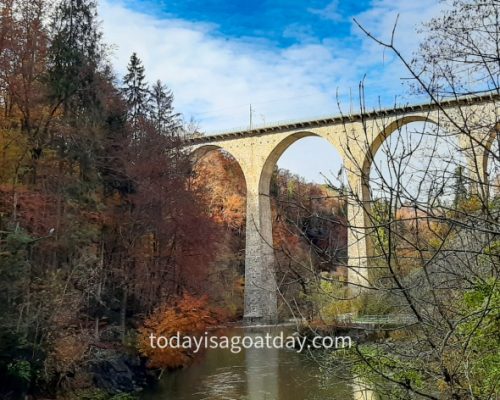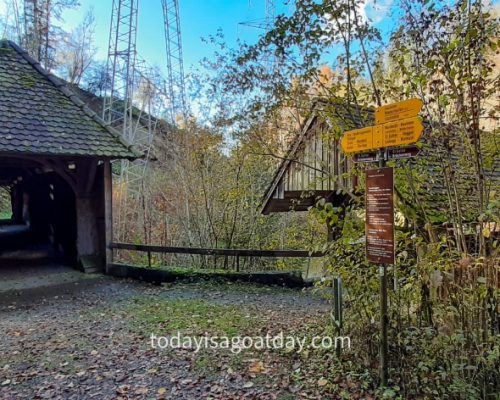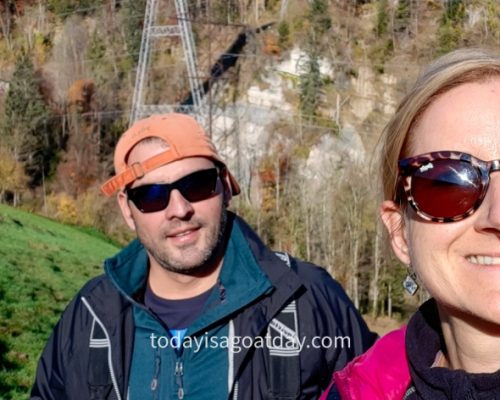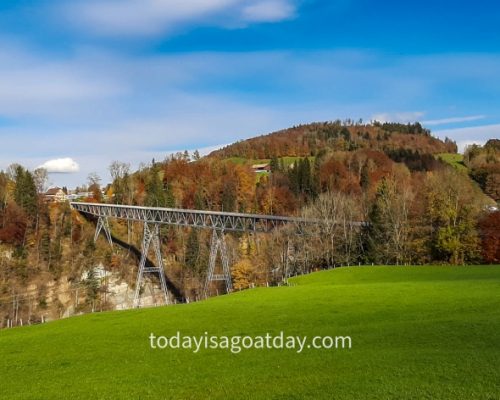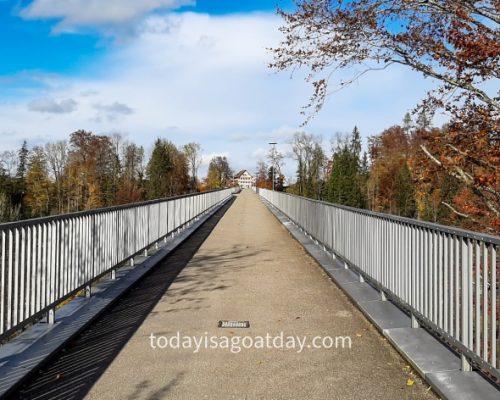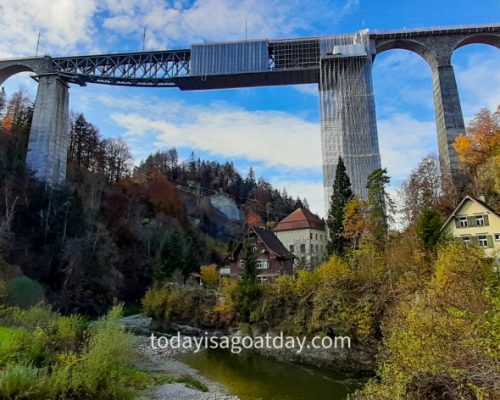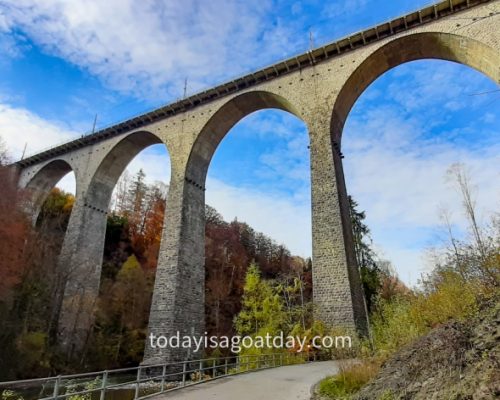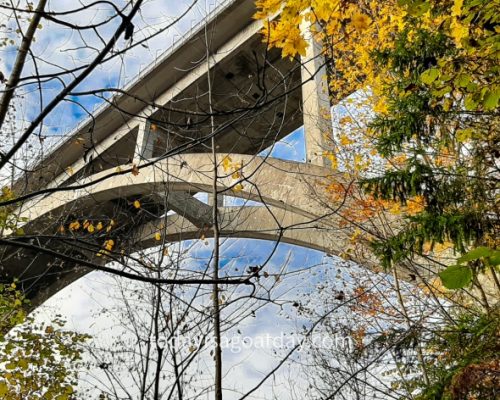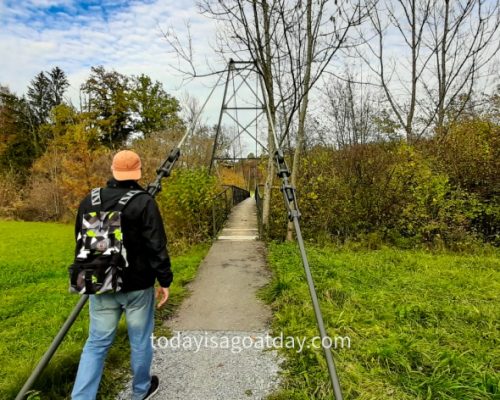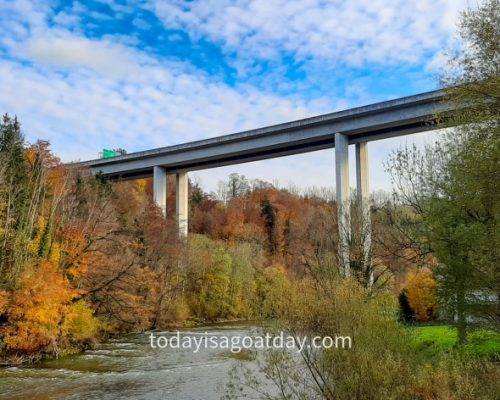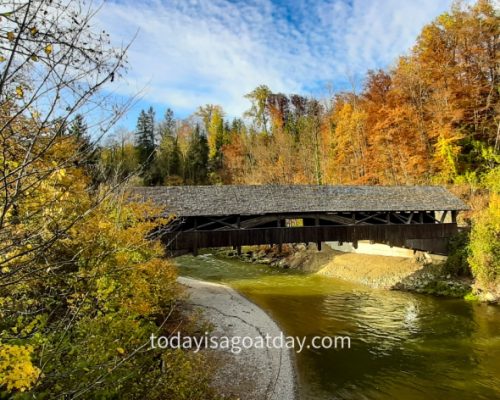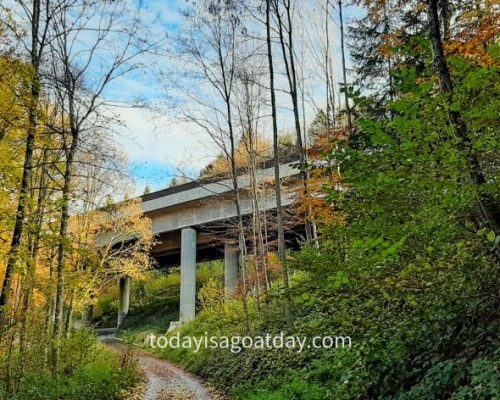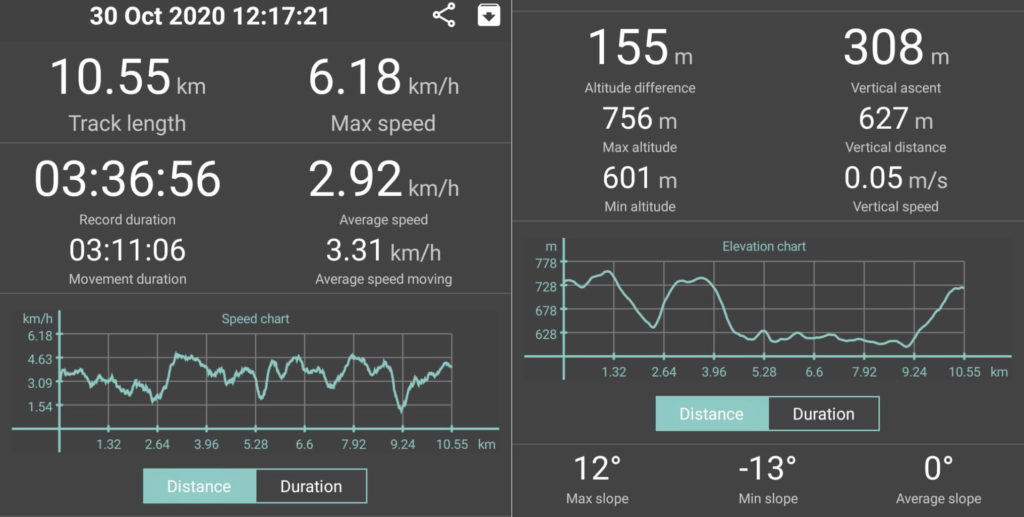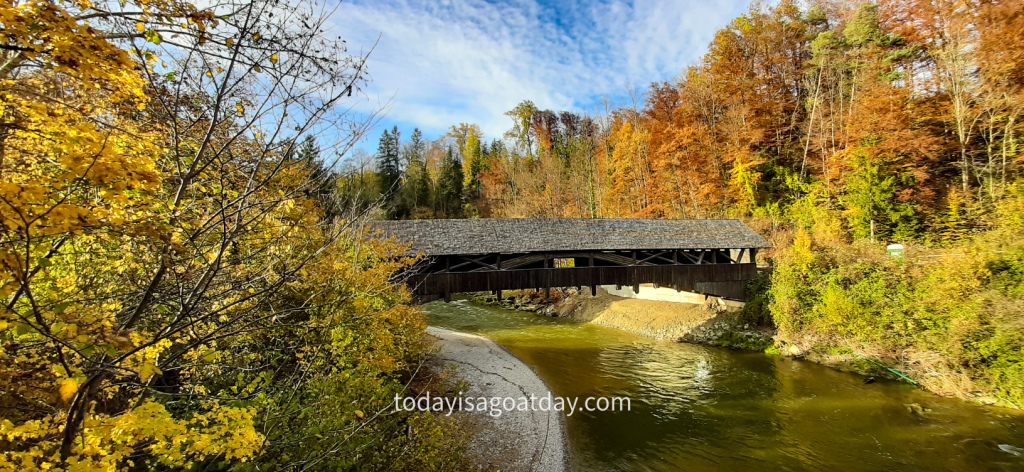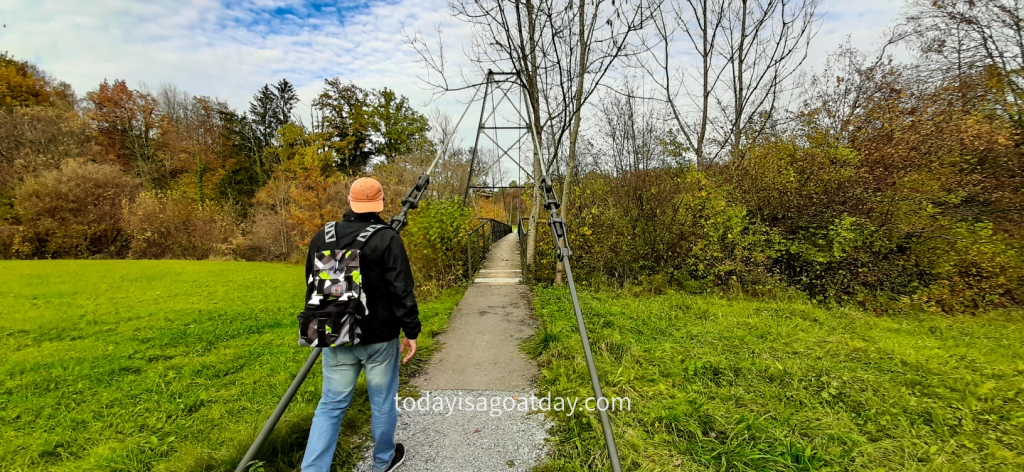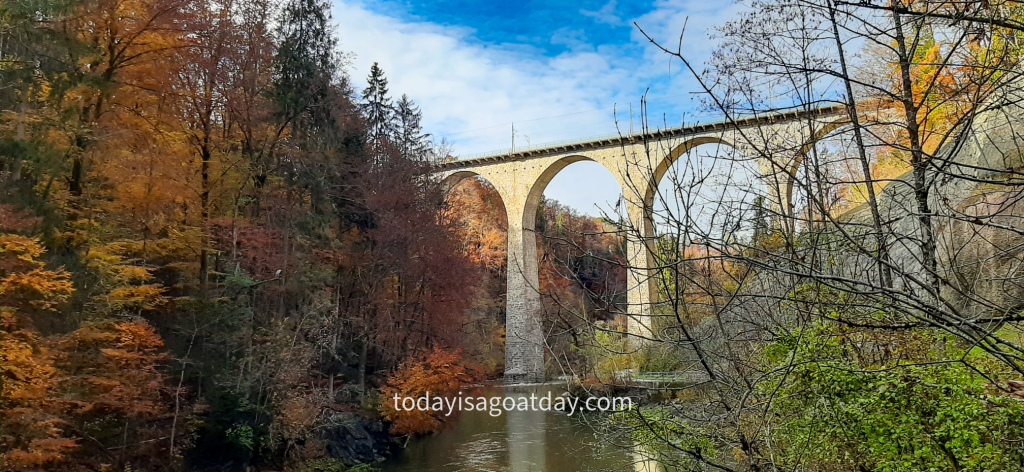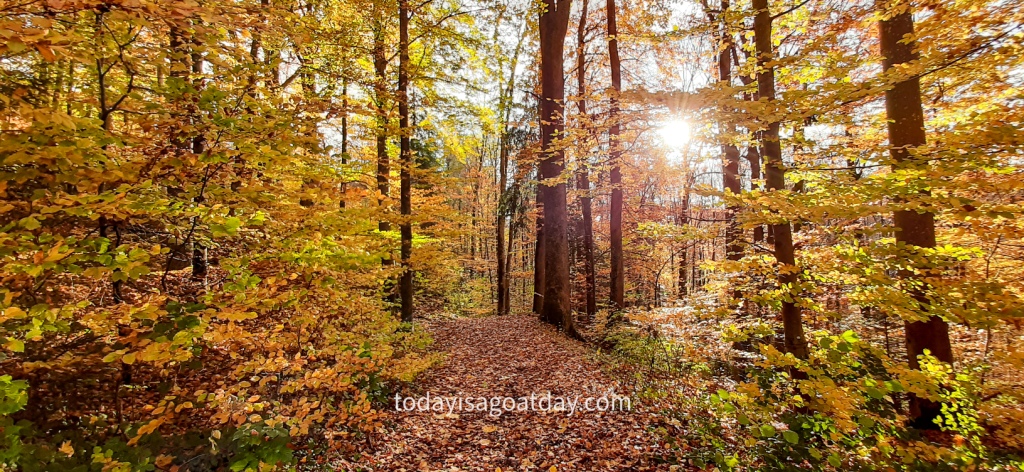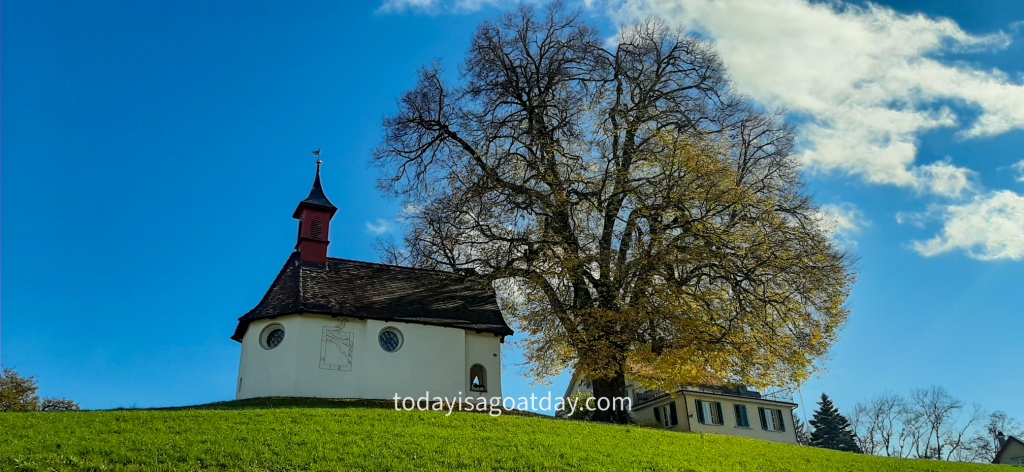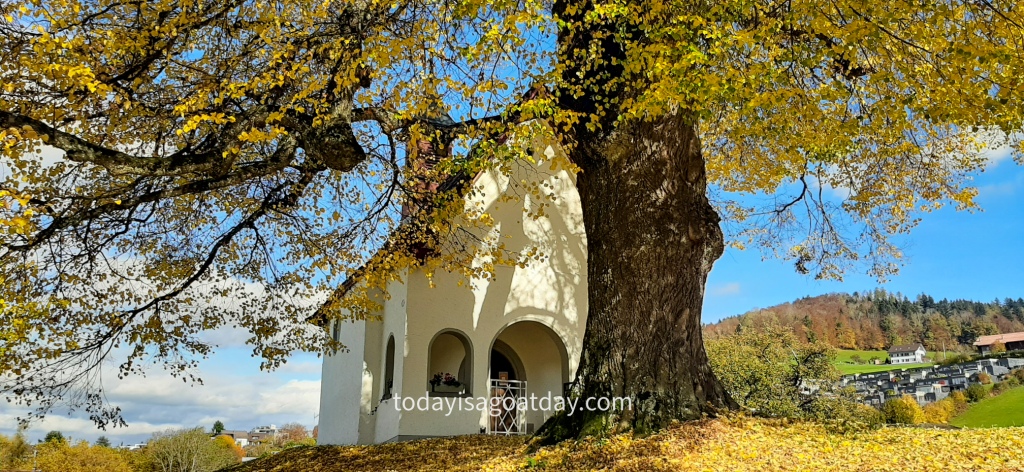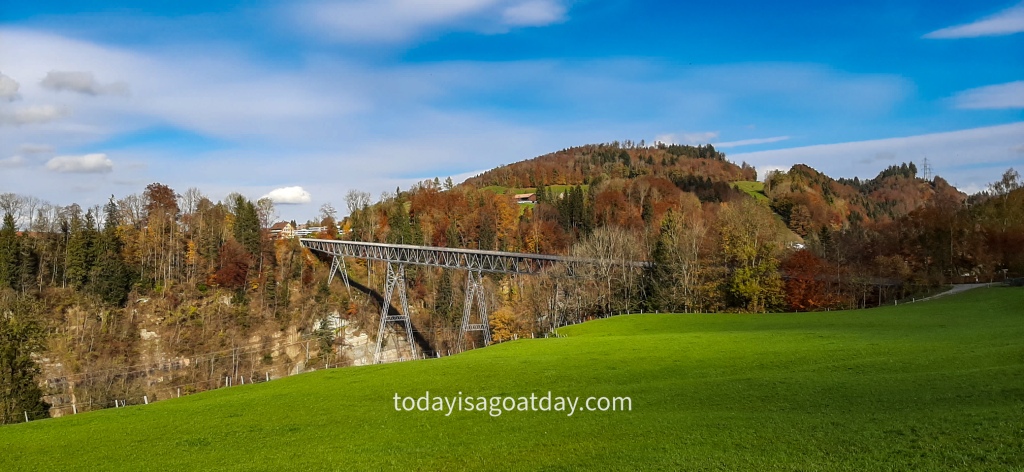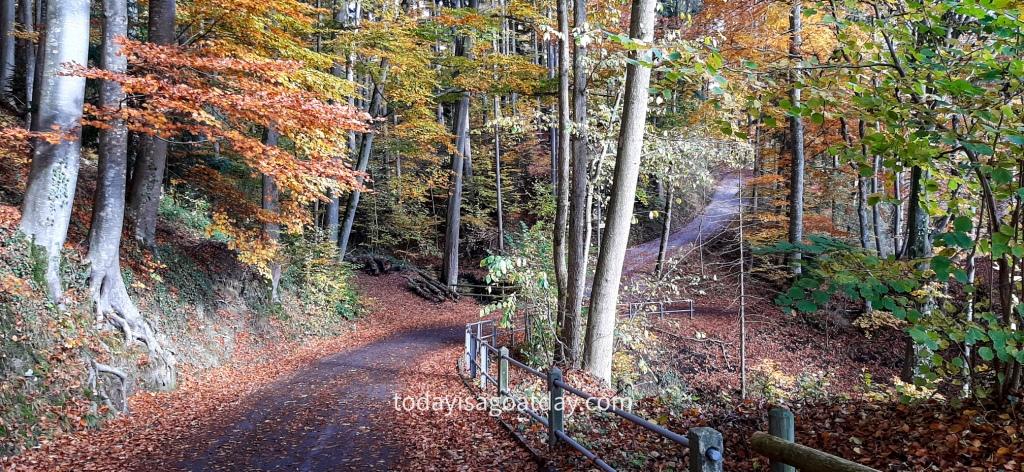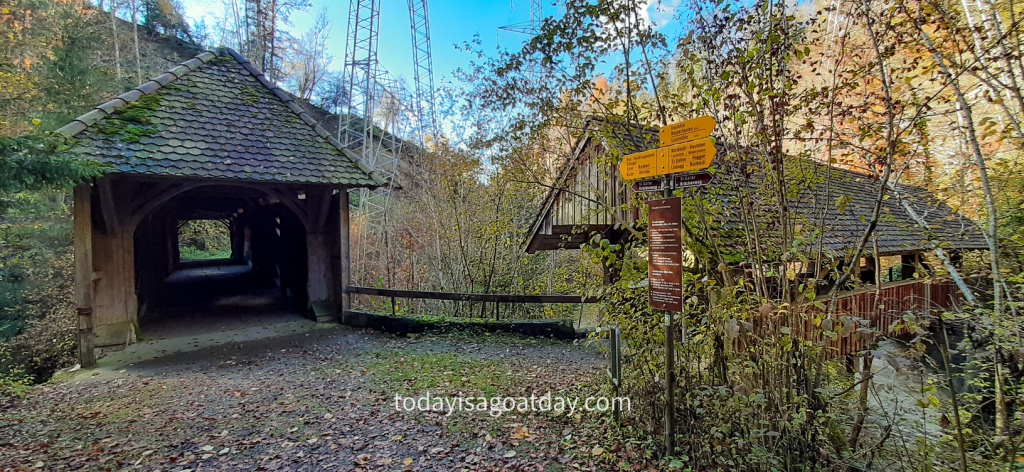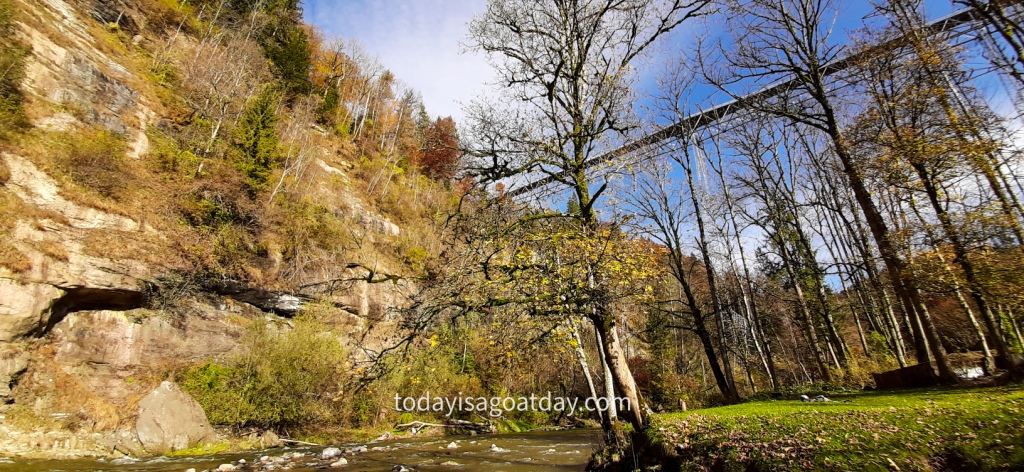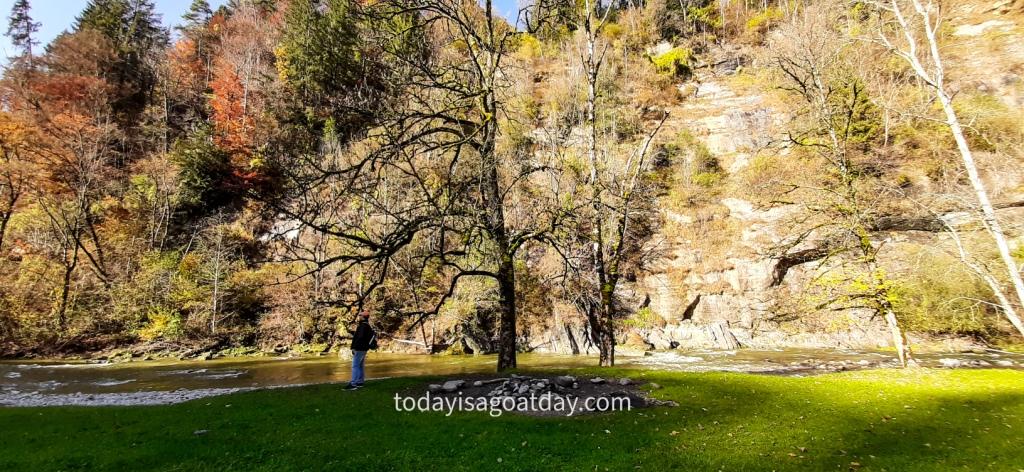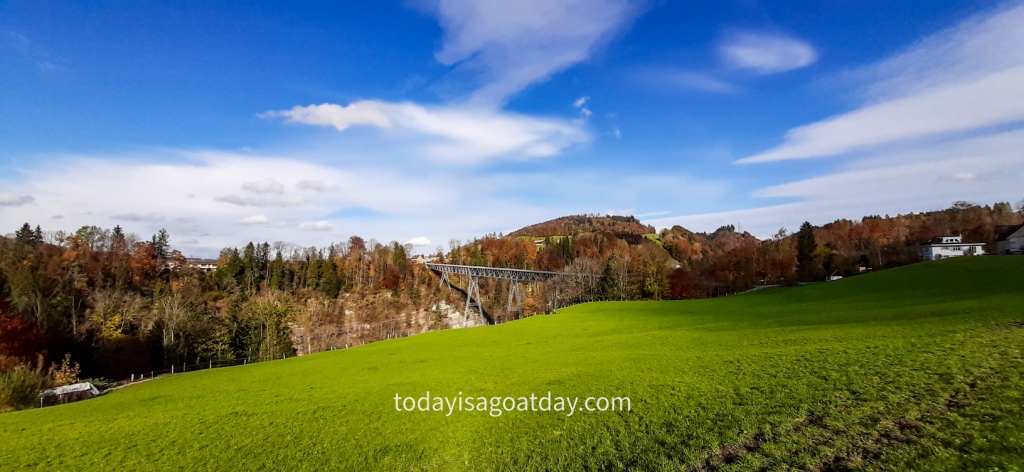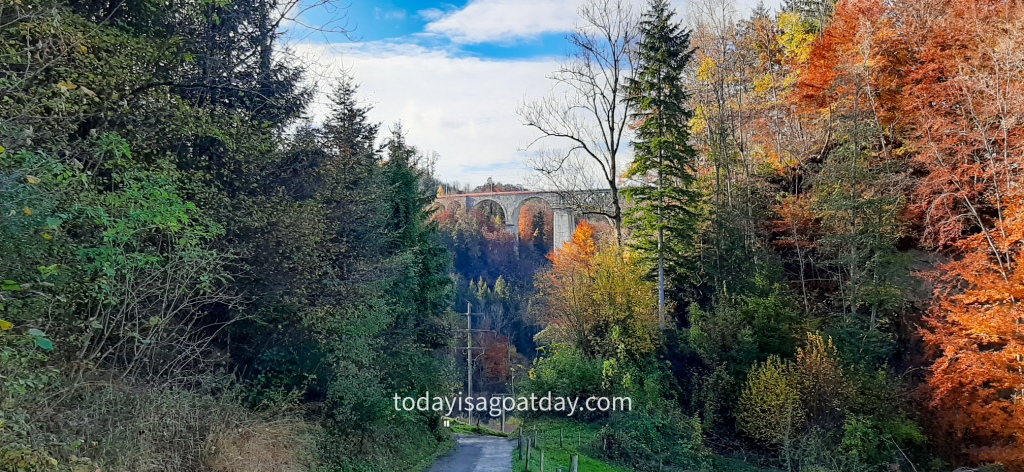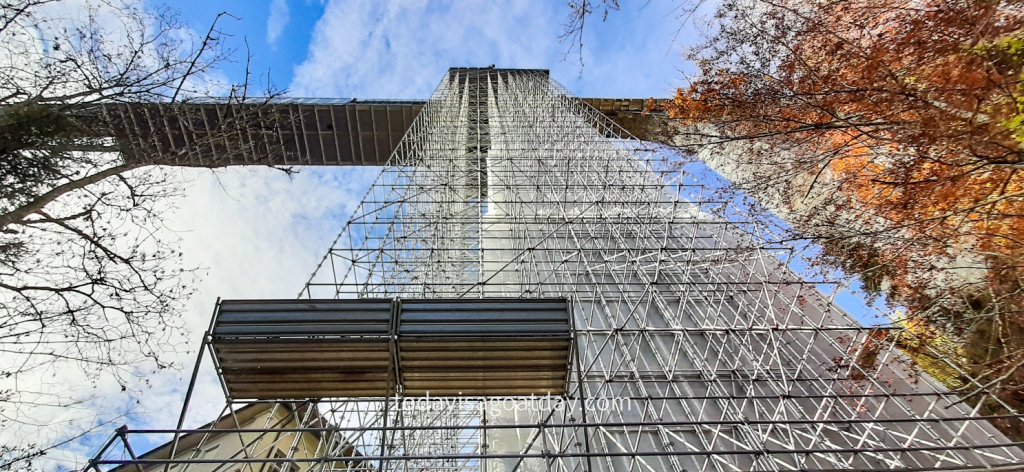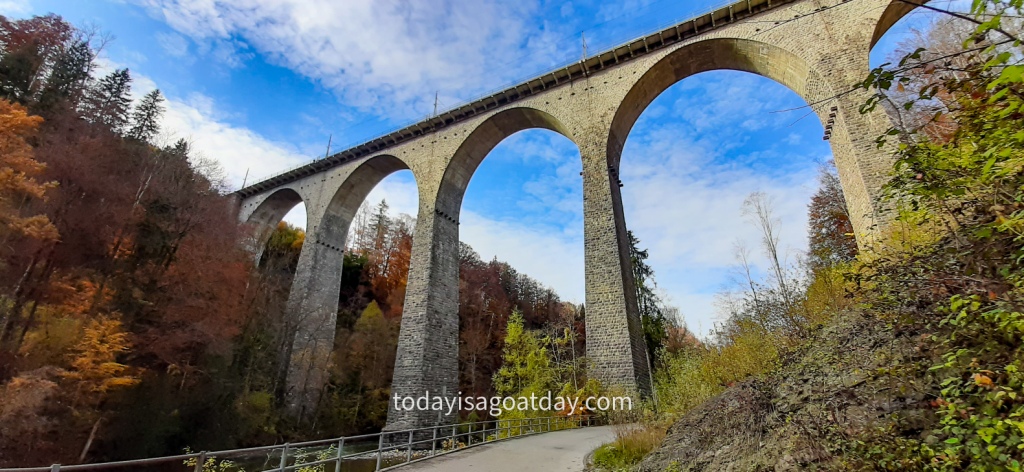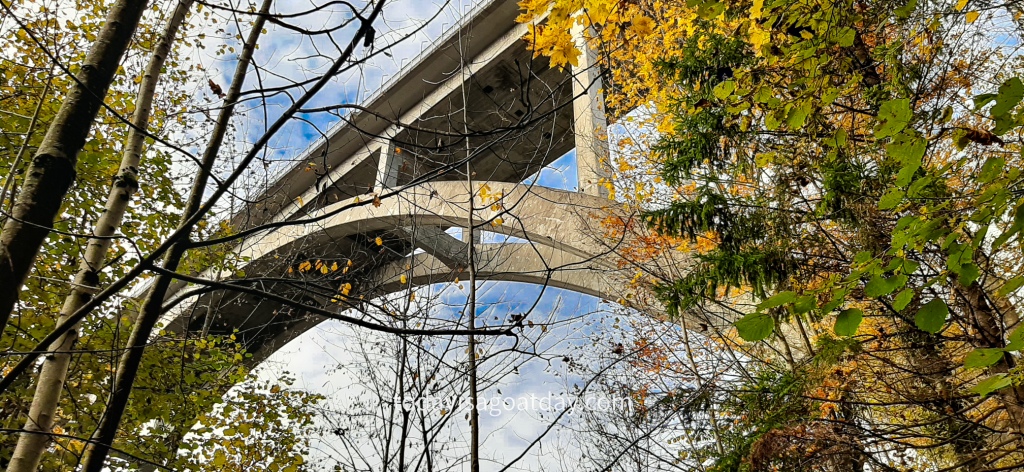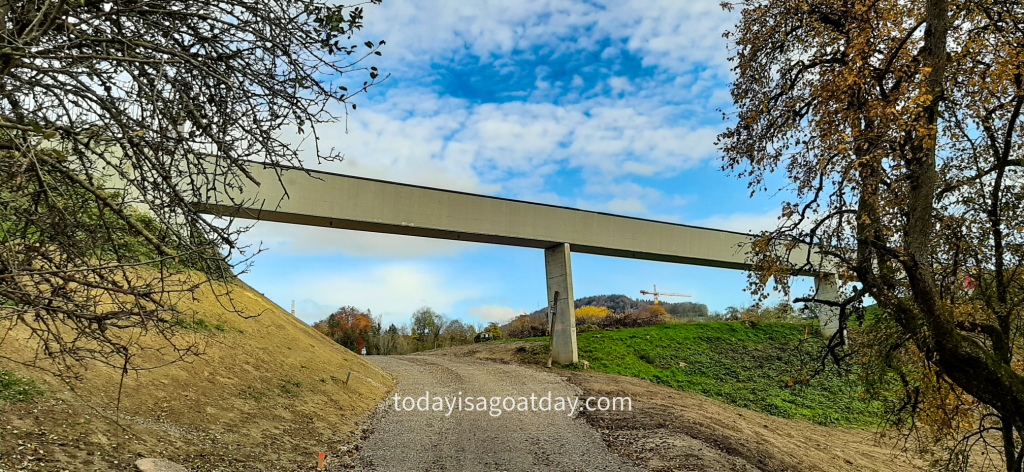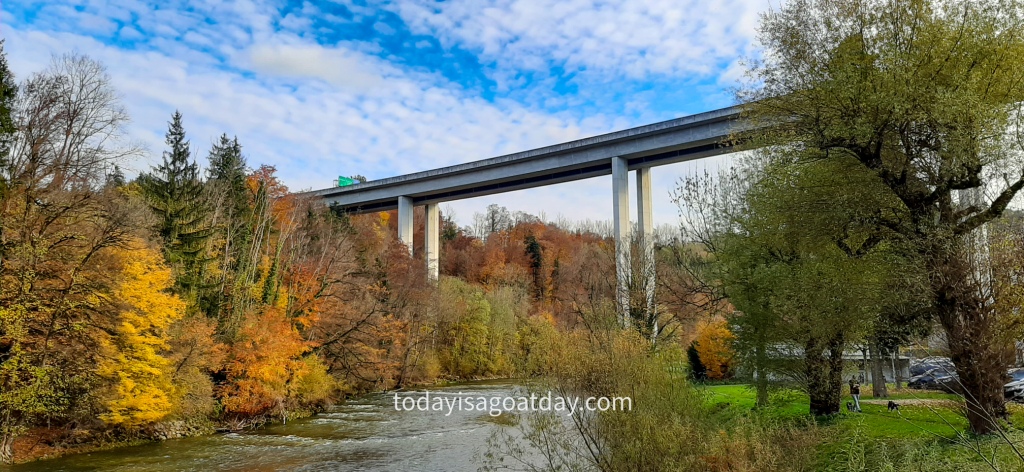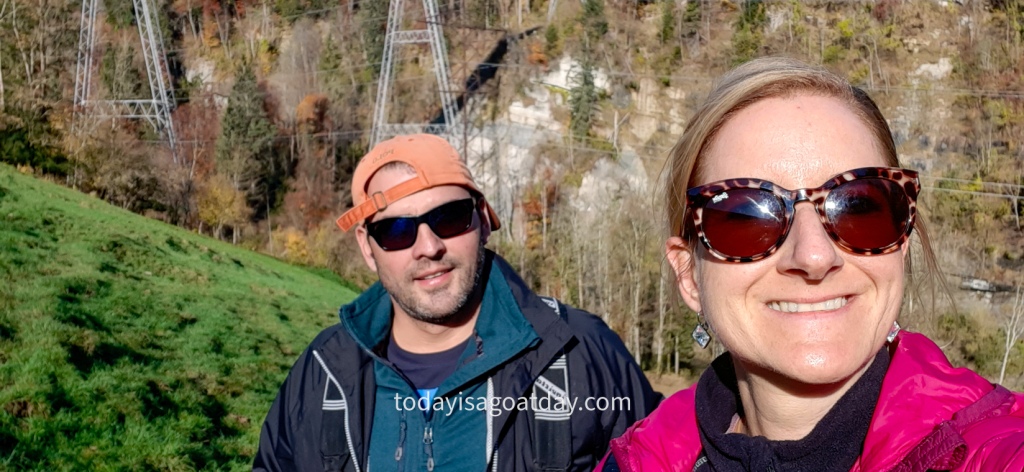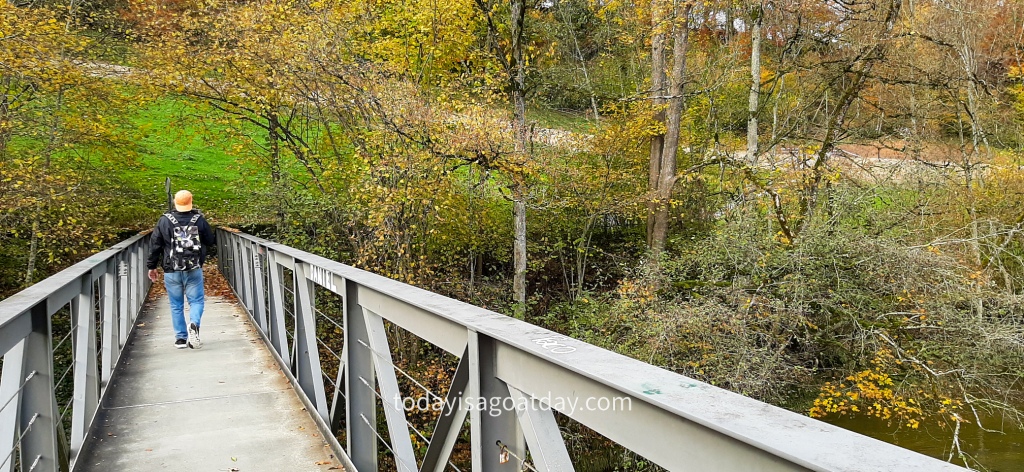Hiking in St. Gallen
The Bridge Walk
30|10|2020
Hiking in St. Gallen | The Bridge Walk
Bridges, bridges, bridges | Hiking in St. Gallen | A great mix of new and old
Die Fakten:
Ausgangspunkt | St. Gallen-Haggen train station
Endpunkt | Bus stop Stahl KV-Schule (from here we took bus no. 2 direction Wolfgangshof back to the train station St. Gallen-Haggen)
Reine Laufzeit | 3 hr 11 minutes
Aufnahmedauer insgesamt | 3 hrs 37 minutes
Streckenlänge | 10.55 km
Aufstieg | 308 m | Abstieg | 308 m
Technischer Anspruch | leicht |Kondition | leicht
Familienfreundlich? Ja
Erfrischung | WC Stopp Ja
Wegpunkte | St. Gallen-Haggen train station – Störgel – Spisegg – Ochsenweid – Bus stop Stahl KV-Schule
Beschilderung | Ja 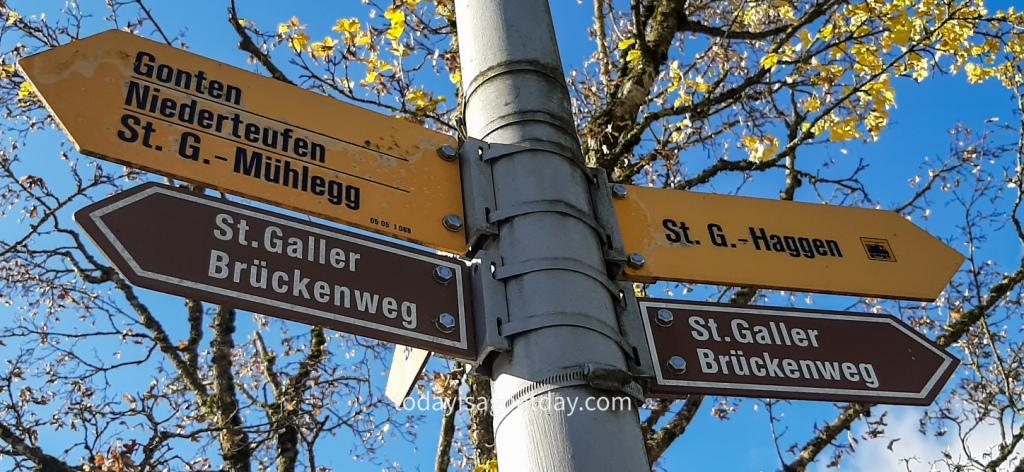
Hiking in St. Gallen is ideal for bridge lovers and those who look for a diverse half-day hike close to the city. The Bridge Walk keeps what it promises! On the approximately 10 km long route, we passed 18 viaducts, covered wooden and modern concrete bridges as well as hanging bridges. A colourful mix of new and old! At each bridge there is an information board about all the construction details of the bridges.
Hiking in St. Gallen | The Bridge Walk (St. Galler Brückenweg)
Whilst we were searching for a hike in the canton of St. Gallen, we came across the St. Gallen Bridge Walk (St. Galler Brückenweg). And the name keeps its promise! During the three hours of hiking, you practically walk from one bridge to the next. Below you get a small teaser of what to expect.
In fact, you hardly realize that there is more to discover on this diversified hike than bridges. Why is that? The bridge walk passes through the so-called “Sitter and Wattbachlandschaft”. This is a beautiful nature and landscape conservation area. On this autumnal afternoon, it presented itself in brilliant yellow, orange and red tones. Bliss!
Nevertheless, the main attractions of this beautiful tour are the bridges and there are plenty of them to see.
The first photo motif, however, is NO bridge!
The hike started at the train station “St. Gallen-Haggen”, from where we followed the brown signs (St. Galler Brückenweg). Soon we found ourselves in front of the first really nice photo motif. Surprisingly it was not a bridge, but a small picturesque chapel. The 15th century chapel of St. Wolfgang to be precise.
The chapel, a stately lime tree and a farmhouse stood imposingly on a prominent hill in front of us. It goes without saying that we had to take a close look at it.
The yellows leaves rustled under our shoes as we climbed up the hill. Surrounded by a sea of leaves and framed by the huge lime tree, the chapel embodied the ultimate romantic autumn picture for us. It should not remain the only one on this hike…
Haggenbrücke (Haggen bridge) | The first bridge on the St. Gallen Bridge Walk
From here, the path led us up Haggenstrasse (Haggen street) to the first bridge, the impressive Haggenbrücke. “Brücke” is the German word for “bridge”.
The 355-meter-long truss bridge, with a height of 98.60 meters, is one of the highest bridges in Europe. Therefore, this bridge can certainly be described as “impressive”, in my opinion.
We did not cross the bridge, however, but first descended left into the “Tobel” (ravine in English). Since you might come across this word on your travels through Switzerland, I thought I should elaborate a little further.
What on earth is a Tobel?
A “Tobel” simply is a narrow valley, gorge or ravine, often located in the forest. The word “Tobel” is frequently used in the western Alpine foothills, especially in eastern and central Switzerland.
This is, in fact, the second time I have come across the word. The second time, not knowing what it actually meant. Therefore, on the occasion of this blog I have finally looked up the definition.
Possible title for my next book: Hiking in St. Gallen – you never stop learning!
Moving on, we followed the path into the “Tobel” / ravine. Next, we crossed the bridge at the former north mill and soon reached the beautiful “Zweibruggen”.
“Zwei” meaning “two” and “bruggen“ translating to „bridges“ – two bridges. The next picture will explain it all!
From two bridges, we crossed over one, then under another…
The smaller of the two (on our right) spans the Wattbach brook, the larger wooden bridge, the river Sitter.
We followed the signpost over the larger wooden bridge and soon found ourselves below the mighty Haggenbrücke.
From the two bridges, we crossed over one, then under another until we arrived…You got to watch out here, all these bridges can get a little confusing!
What we found, however, must be a wonderful place for picnics and barbecues in summer!
At this point, I really have to point out the extensive barbecue areas in Switzerland. Here they are also called fireplaces.
Switzerland | Home of the BBQ lovers
So far there has hardly been a hike or walk where we have not passed a fireplace. In forests, on river or lake banks, in the mountains, no matter where you go, a barbecue spot is usually not far away.
The sausage roasting in nature turns the hiking experience into a REAL hiking excursion for many hiking enthusiasts. On various websites you can even plan your hike according to attractive fireplaces and barbecue areas. Check out wegwandern.ch or schweizerfeuerstellen.ch to get an idea. Krisztian has also been infected by the Outdoor-BBQ-Virus and is languishing at the smell of the sizzling Cervelat.
Cervelat is the famous Swiss national sausage. If you want to learn more about this local superstar, take a look at this funny article.
Today, however, we turned our backs on the barbecue area. Instead we climbed up a muddy and slippery meadow path to Haggenbrücke, where this picture was taken.
From there we hiked on towards “Störgel” and past Appenzell farmhouses in full anticipation of the next bridge.
But not without taking a final look back at our beautiful Haggenbrücke. Bye bye and see you again!
The incredible Sitter viaducts
We did not have to wait long for the next bridge highlights to appear! Following the path steeply downhill we first spotted the impressive SOB Sitter viaduct of the Swiss Southeast Railway (SOB in German).
Undoubtedly another romantic autumn picture. Hiking in St. Gallen simply feels a bit like being in a romantic love story, just beautiful!
Shortly before the viaduct, there is another little highlight, a small covered wooden bridge. This bridge is also called the “Talking Bridge” because of its many historical inscriptions.
We passed the wooden bridge, however, and stared spellbound at the mighty railroad viaduct.
The unbelievable 100-meter-high construction, built between 1907 and 1910, is considered the highest standard gauge railroad bridge in Europe. At 365 meters in length, it towered high above our heads. Amazing!
Even the huge filigree scaffolding that encased a pillar had a romantic and beautiful effect in its own gigantic way.
The next stunningly beautiful viaduct appeared just a few meters away.
The SBB Sitter Viaduct is no less impressive with its 209-meter long and 63-meter high vaults. Covered with 18,000 tons of local quarry stones, the bridge is a real eye-catcher!
Hiking in St. Gallen | Of modern beauties and ugly ducklings
Deeply impressed by the historical beauty of the bridges, we continued our hike along the bridge walk towards more modern architecture.
In our opinion, the Fürstenland Bridge, as seen in the photo below, could definitely keep up with its older bridge competitors. A real bridge-beauty-swan!
Other modern constructions, could not really convince us with their aesthetic appeal and inevitably ended up on the “Ugly Ducklings” list. One example is this „splendid“ kind of a bridge.
Bridges, bridges and even more bridges
Either way, old or new, swan or duckling, the variety and incredible number of different bridges along the way is impressive.
We couldn’t stop counting bridges, marvelling at them, taking pictures and passing under or crossing them. Fascinating and very entertaining! We were totally in a bridge rush.
The bridge walk continued to lead us along the river Sitter, over meadows and next to roads. In addition, we continually walked under and over bridges and passed by them on our way towards Spisegg. Bridge-mania!!!
The best comes last | Hiking in St. Gallen
According to several hiking reports, the St. Gallen bridge path ends in Spisegg.
Maybe because there is one last particularly beautiful bridge in Spisegg. The covered Spisegg bridge from 1778. The covered Spisegg Bridge is without doubt my personal favourite bridge and the highlight of our autumnal romantic bridge tour.
A truly successful finish to a great hike. How goes the saying again? The best comes last!
But since we still hadn’t had enough, we walked another half hour through the forest towards Feldli / Stahl.
On the way we spotted yet another bridge. The last bridge for today. We took a long breath in and a full breath out. Today was a bridge day!

